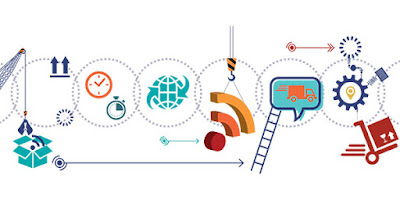Hello readers.I'm Madhumitha.M doing my second year MBA in Amrita School of business.Welcome to my blog on topic "Software of as Service(SaaS) in Supply Chain".This topic may not be new in supply chain but lot of people doesn't know about it.Lets see this in brief.Enjoy your reading!
Many trading partners are asking their vendors to synchronise their stock details in compliance with global norms and include some advanced delivery notes, and this is something that can be done with the aid of the supply chain of SaaS. RFID tags and barcode labels should be accompanied by these.
Shipping and product data are just two components of complexity that are rising, and with supply chain SaaS, these can also be helped. The big box movement and the Internet have generated new trends in customer behaviour and have created new supply chain systems that need to be embraced by manufacturers.
An example will be the manufacturers of the products packaged to the big box stores for the customer to endorse three forms of manufacturing and order fulfilment:
- Shipment of products to distribution centres
- Products that are sent directly to the stores
- Orders purchased on the Internet are delivered directly to the customer
- Accessibility-The level of accessibility you receive is one of the biggest benefits of using a SaaS provider. Since everything is done online, from just about anywhere, you can typically access your dashboard. In reality, for all your remote work needs, the majority of SaaS providers still offer some form of mobile app.
- Reliability-Even among the most accomplished IT boys, handling a server, let alone all the applications that it will certainly be running, can be a challenging challenge. However, with a decent Software as a Service provider, this is not something that will worry you. That's what you pay for from your provider.
- Return On investment-One of the easiest ways to do this is to get rid of your on-site or in-house solutions and sign up for a successful SaaS kit. In the long run, this will save you too much money on stuff like server racks, server room cooling systems (yes, servers get pretty hot), updates, etc ... I can almost guarantee you that actually making use of a SaaS can be more effective and less expensive.
- Security-These days, we hear too often of security breaches occurring in major corporations. In this day and age, they are a very real threat and that is why you need the peace of mind that comes with having all the sensitive data of your company securely processed only via the cloud-based data centre of a vendor.
- Downtime and outages-All at the same time, many of the SaaS providers out there service many customers. Their data centres tend to use such a considerable volume of bandwidth because of this. The dilemma is that they just have too much at their hands.This suggests that by attempting to reach your own dashboard, you can face outages, downtimes, or major latency problems in order for them to respond to any more consumers. As the bandwidth decreases, so do the speed or availability.
- Minimal Control-You trust this business with some of your more sensitive data when you sign an agreement with a SaaS provider. If it is in terms of distribution processes, resource control or the whole database of workers, it could be devastating if it falls into the wrong hands.When you consider using the cloud in a public space with multi-user systems or servers that allow multiple users to connect at the same time to the same home network, there is a real issue of having databases hacked.







No comments:
Post a Comment